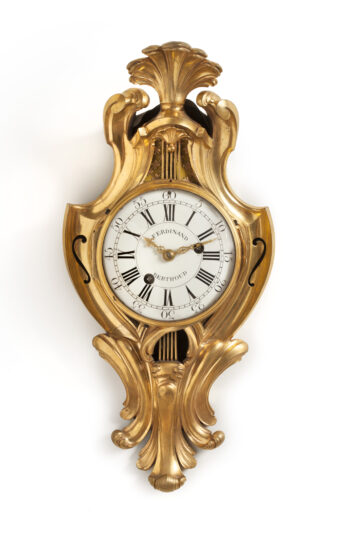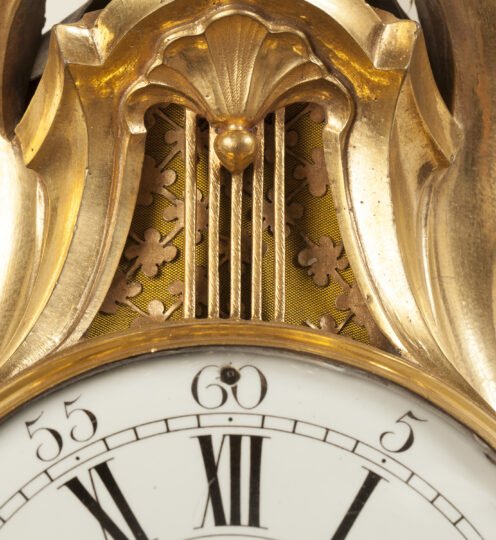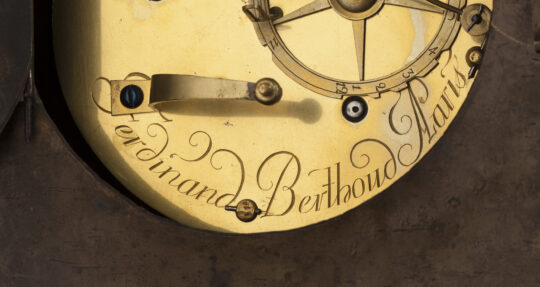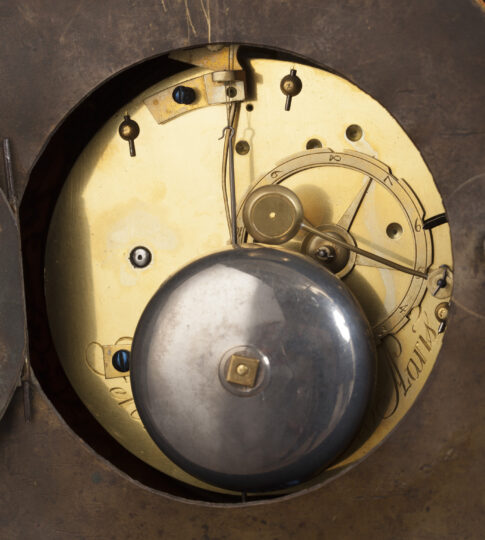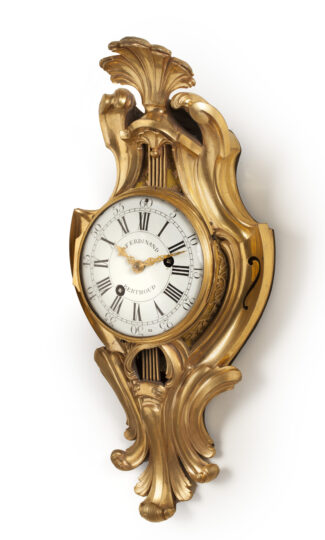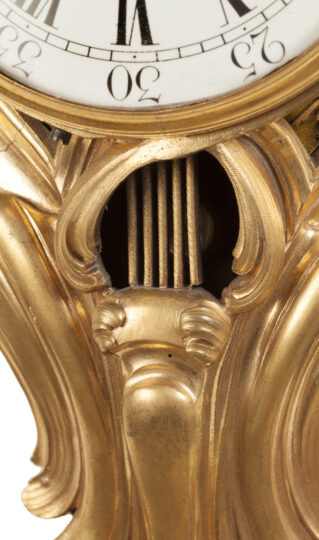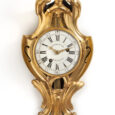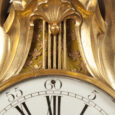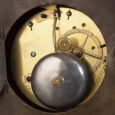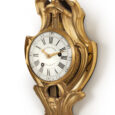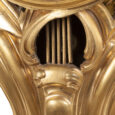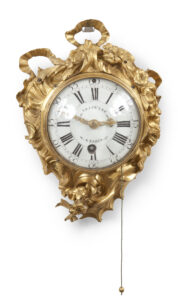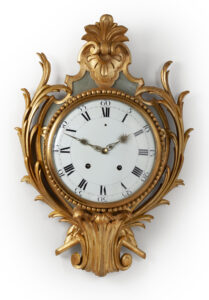CARTEL D’ALCOVE L. XVI Ferdinand Berthoud à Paris, Ca. 1775 France
M&R53
CARTEL D’ ALCOVE L. XVI
Signed: Ferdinand Berthoud AParis
Circa 1775
France
Movement
The eight-day, spring-driven brass movement of this cartel has circular plates, of which the backplate is signed Ferdinand Berthoud AParis. It has going and striking trains, the going train with anchor escapement and short silk-suspended pendulum. The striking train, regulated by an outside count wheel, indicates the hours fully and the half hours with one stroke on a bell.
Dial
The circular white enamelled dial has a Roman chapter ring with Arabic five-minute and minute divisions. The time is indicated by a pair of pierced and engraved gilt brass hands. The winding holes are unusually positioned, one near the VII and the other near the III. In the 60 is a regulation arbor which controls the length of the silk suspension wire. The maker has signed the dial in a semi-circular way around the middle of the dial: Ferdinand Berthoud.
Case
The firegilt brass case of the cartel is in the shape of a stringed musical instrument and is symmetrical in form, typical of the Louis-XVI period. The dial is protected by a convex glass set in a gilt brass bezel. Below the dial is a pendulum aperture, whilst above there is a sound fret, pierced in the form of a flower motif. The lyre strings seem to continue from above the pendulum aperture to the sound fret. There are also sound frets to either side of the case, which is embellished by scroll and leaf motifs.
Duration 1 week
Height 43 cm
Width 21 cm
Depth 15.5 cm.
Literature
– Tardy, Dictionnaire des Horlogers Français, blz. 49-53. – H.M. Vehmeyer, Antieke uurwerken, blz. 598.
The maker
Ferdinand Berthoud was born in Plancemont in the vicinity of Neuchâtel (Switzerland) in 1727. He came to Paris in 1745 and initially worked for Julien Le Roy. He became a master clockmaker in 1754. He was first married to Ms Chatri from Caen in Normandy in 1764, later in 1782 to Ms de Moustier from Saint-Quentin; he had no children. From 1786 he was Horloger du Roi and Inspecteur Général des Machines pour la Marine. He was one of the great French makers of longcase and table regulators, as well as marine chronometers. His first chronometer dates from 1754; it is estimated that he produced a total of 70 marine chronometers. He died in Groslay in France in 1807.

